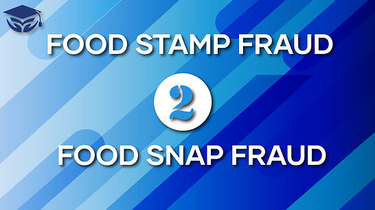
Introduction
For decades, governments have been working to maintain the pact of welfare and flourishment among their concerning population. The government’s key role is to provide its concerning population with basic amenities and help the vulnerable section acquire necessities.
Food stamp facilitation came into working in the economic deprivation phase; a globally affected economic crisis suggested that governments implement schemes emphasizing basic nutritional food to their respective citizens.
Such schemes were also introduced in the United States of America to promote the phenomenon of welfare among the citizens. The first-ever food stamp program was introduced in 1939 in the USA as the nation dealt with economic uncertainty. The scheme was introduced by following the ‘orange and blue stamp scheme’ pattern. The targeted audience for this program was women and children initially, yet low-income families also got included within a short period. The scheme suggested that the targeted audience be given an orange stamp worth 1$ and a blue stamp with 0.50$, which would allow the needy citizens to purchase recommended nutritional intakes almost for free.
What is food fraud? Misconduct in the manufacturing and distribution of food could be termed food fraud. Not allotting a decided proportion to the pre-decided audience would also be considered food fraud. Or in some cases selling subsidized products at higher prices would also be called food fraud.
What is food stamp fraud? Malpractice involves the violated or discriminatory distribution or possession of food stamps distributed by the federal government as a part of a nutritional scheme. Possessing more stamps or trading them off for irrelevant commodities could also be considered food stamp fraud. This scheme hiked the range of fraud cases in the initial days of the program. Business-minded people took advantage of the federal scheme and exploited the system to satisfy their vendetta. With the exploitation of federally initiated programs, low-income families were still prone to not getting the basic amenities.
The rich got richer, and the poor got nothing.’
With the prominent introduction and implementation of schemes comes the scope of discrepancies factors capable of violating or affecting the quality and functioning of the scheme. Certain surveys and federal recorded data were the basis of categorizing who to consider for the food stamp program. The program started with an ideal motive, to eliminate hunger and provide basic nutritional content to the citizens of their country. Food fraud stamp is one of the scams which have affected the nation economically at a severe level.
Example of Food Stamp Fraud
Food stamp fraud cases were vastly affecting the economy and social stability. Numerous food stamp fraud cases were registered at that time. In the early 1980s, a federal task force of 900 employees reported 1,390 cases of an indictment of food stamp fraud on a national scale. An indictment is considered misconduct as a serious crime. Reports suggested that discovered cases were a handful; there were more cases of fraud that were still in the formulation at that time.
A legal testimony suggested that an anonymous person from West Virginia bought facilitated houses in different states, diamonds, cars, and guns and got left with a lot to invest in drugs only by food stamp frauds. So, this could reflect a slight idea about at what scale a person has benefitted from the exploitation of the federal scheme. A study by the federal department in the 1970s found that the fraud rate was 55.4%.
There are many cases of individuals or groups coordinating to pull their benefits out of the federal scheme. The scale of such scams started up from an individual and reached linked networks. In the 1970s and 1980s, food stamp fraud trafficking rings came into the limelight in Chicago, St. Louis and Philadelphia.
What factors lead to a food fraud scam? Business-minded people traced down the loopholes in the system and tracked down their ways of getting into the system and affecting it for their means. During Kennedy’s presidential period, he looked into the system’s loopholes and reformed it to maintain the pact of welfare for the needy ones. Reformations include the rigid involvement of the federal authorities and their monitoring of the scheme’s functioning. And after Kennedy’s presidential tenure, Lyndon B. Johnson continued the scheme by introducing food stamps as a free amenity for the poorest of the poor. Till 1979 nearly 20million low-income families depended on this food stamp scheme.
First Food Stamp Fraud case
The first food stamp fraud came into the limelight in 1943 when Nick Salanzo, a retailer, was caught mischarging for the subsidized food stamps. He was subjected to a fine and charge of felony as the result of this misconduct. This initial case alerted many people with a warning, yet some took advantage of it and suggestively benefited from it. Furthermore, federal authorities got a slight idea about the chances of misconduct and tracked down dozens of misconduct cases in this area.
Moreover, in certain cases inclined people look into the system’s drawbacks. People criticized the system by labelling it as riddled with fraud as it has the legitimate potential of occurrence of malpractices. The program was ineligible to claim or distribute benefits among the targeted population. And as a result of such malpractices, food stamps were traded off for non-food items such as guns or drugs.
Procedure of reporting
Firstly, Ronald Reagan’s involvement in the federal working system, the food stamp system resurfaced as the EBT system (Electronic Benefits Transfer ). The EBT system initiated a provision of cards based on the government identification records and PIN to authorize payments. The SNAP program is a reformed face of the food stamp program that is single handedly run based on the EBT card. USDA administers and monitors the working of SNAP. A thrifty food plan determines how much it would cost to maintain a nutritional diet. SNAP plan keeps on fluctuating depending on the dollar’s value in the global market, and the contents of the scheme are decided on that basis too.
How to report food stamp fraud? To report food stamp fraud anonymously, welfare fraud, or SNAP-based fraud, one should consider contacting the appropriate county agency or federal authorities or reporting it to the nearby police department. The reported case would be forwarded to the concerned bodies, and an effective investigation would occur.
Food Stamp Fraud investigation
Regional law enforcement or federal agents working with US district attorneys are the custodian bodies that can actively intervene in the matter of welfare fraud. Welfare fraud reflects misconduct or malfunctioning in the policies or schemes introduced by the federal government. The authorities accountable for intervening in welfare fraud are federal lead departments.
From the police department to the lawsuit authority, the federal government could intervene in the reported welfare fraud cases. Earlier, the separate teams used to get accumulated to intervene in such matters. Federal authorities keep making separate groups look into frauds affecting the economic flourishing of their country.
The process, reliance and severance of investigation is depended on the prevailing laws and penalties against such misconducts. The investigation is held by the team recommended by the federal government; they conduct the investigation, follow up on the legal regularities and forward their case to the lawsuit. Further decision-making process relies on the legal department.
Penalties for Food Stamp Fraud
The consequences of food stamp fraud were counted as an indictment. To be more precise, the knowing use, transfer, trade, acquisition, altercation or over possession of illegal SNAP benefits would be held accountable for a felony, fine of 250,000$ and prison treatment for 20 years. The current status of legal norms levied on someone who is accountable for food stamp fraud or, as now, we know it as SNAP fraud. Yet, with time and development, the law could get modified as per the state’s need.
1st offence, food stamp fraud, would be defined as lying in a federally-authorized application about the details of one’s social status or income, which could lead to revoking benefits and amenities. Also, it could be up to implement criminal penalties by the federal authorities.
Apart from these penalties, the chances of eliminating the occurrence of such frauds in the welfare system could decline by introducing digital solutions into the system of SNAP. The digital solution is general biometric and retina identification systems, which would diminish the chances of fraud in the system. And strict monitoring by concerning federal authorities could be a better solution.
From food stamp fraud to SNAP fraud, federal schemes have been manipulated. Certain greed-driven people seek ways to extract their benefits out of such schemes. With the better use of technology advancements and proper monitoring by authorities, the system could function in an ideal manner.




